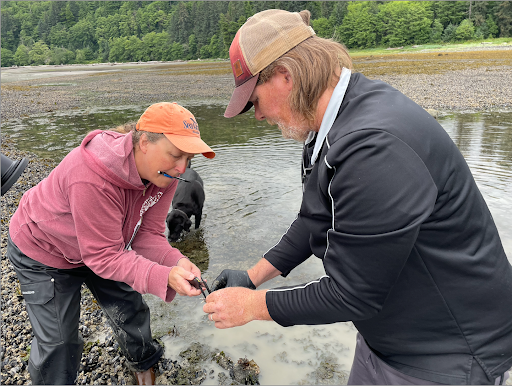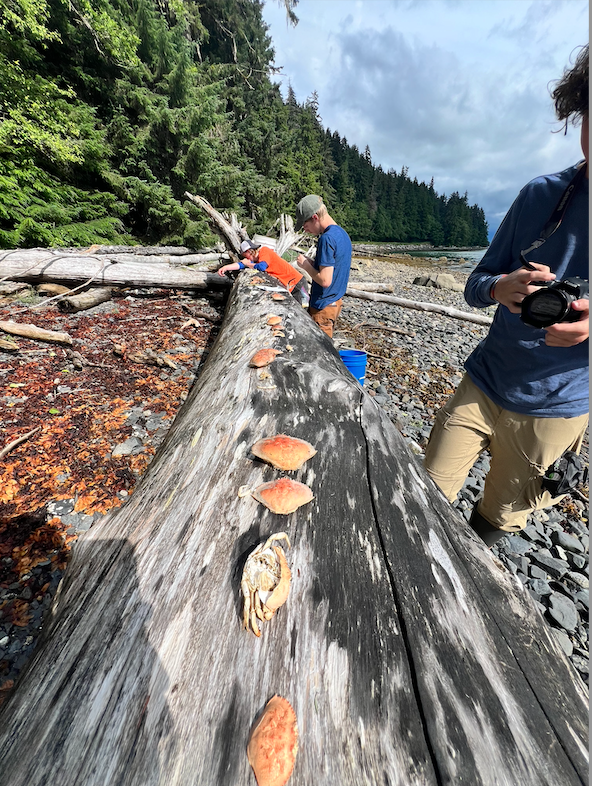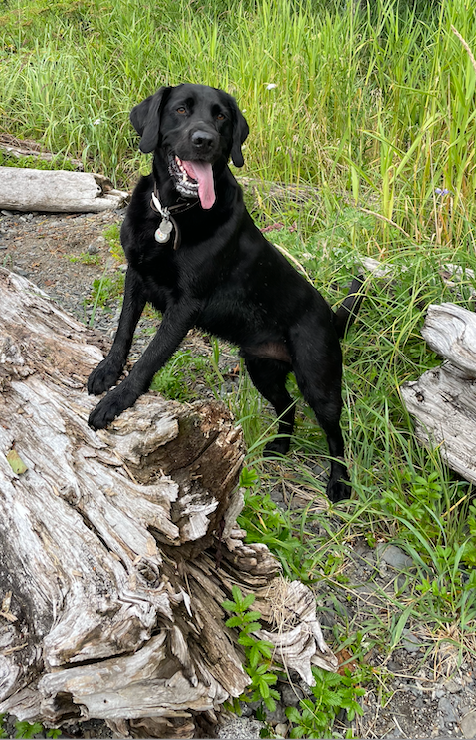
The European Green Crab, a small but formidable invasive species, has recently made its way into the waters of Southeast Alaska. In response, Petersburg residents are increasing their efforts to track and combat this unwelcome visitor.
On July 19, a group of 19 volunteers gathered on the shores of Mitkof Island for European Green Crab Awareness Day. Their mission was to search the beaches and waterfronts of Petersburg for signs of the invasive species.
Brandon Thynes, Indian Environmental General Assistance Program Director for the Petersburg Indian Association, expressed concern over the presence of green crabs in Southeast waters.
“Now they’re in Southeast waters, and we’re concerned because they’ll outcompete our native crab, and they’ll destroy the habitat,” Thynes explained.
He said green crabs pose a serious threat to Southeast Alaska’s delicate marine ecosystems. They are known to destroy eelgrass, a keystone species that provides shelter for invertebrates and young fish, as well as spawning surfaces used by many native species.
“They like to tear up eelgrass and burrow holes,” Thynes said. “They’re really aggressive, so they will compete with juvenile dungees and other smaller native species and eventually, possibly take them over.”
While European Green Crabs have been documented in the U.S. since the early 1800s, they were first detected on the Pacific coast in 1989. Since that initial sighting in San Francisco Bay, the crabs have been making rapid progress northward. The first Alaskan Green Crabs were reported in the summer of 2022. Three carapaces — hardened shells left behind by crabs — were found by the Metlakatla Indian Community on Annette Island during a shore survey. Within a month, they had documented 75 green crabs, both live and dead. This year, shells were found further north, near Ketchikan.
The awareness day molt walk on Mitkof Island commemorated the second anniversary of the discovery of green crabs in Alaska. Volunteers split into four groups, scouring the island’s beaches at Wilson Creek Camp, Crescent Beach, Greens Camp, and Woodpecker Cove. Walk organizers Thynes and Sunny Rice, Sea Grant Alaska’s Marine Advisory Program Agent, chose to focus search efforts on the southern half of the island.
“They lay their eggs in the current, and then they drift to another bay, and that’s how they move up the coast,” Thynes said.
Rice explained, “That’s why we chose sort of the south end of the island because knowing that they’re south of us, the most likely first places would be the south end, with currents drifting up from Clarence Strait. Woodpecker Cove campsite was the best spot for looking. There were 31 Dungeness, one lyre, and one shore crab.”
Despite finding 33 shells in total, none belonged to the European Green Crab. While this is good news locally, Rice pointed out that it is still possible that green crabs have been in the region for years, but only now are people actively looking for them.
“We don’t know if they’ve been here for a long time and people are just being aware because we’re doing a lot more awareness… or they could be moving,” Rice said. “But I don’t think we know for sure because we don’t have a lot of eyes on the ground.”
The lack of confirmed sightings is a relief for now, but it also serves as a reminder of how easily these crabs could slip through the cracks. While the organized molt walk only occurs once a year, Rice and Thynes conduct monthly live trapping surveys to monitor crab populations.

A week after the walk, Rice and Thynes were near Banana Point, checking the traps they set the day before. Rice described the challenge of finding the right place to trap.
“They’re really specific,” she said. “So, you could set a trap 200 yards away, and there were a whole bunch of green crab over there, and if you weren’t on them, then you would miss them.”
Though they have yet to find a green crab near Petersburg, Rice emphasized the importance of the surveys.
“The survey data in the future will be useful because they give us a longer-term picture of the change that may happen if or when they come. We can say, ‘What did this beach look like before they came, and then how did it change once they came?’”
If you spot a crab that looks suspicious, experts like Thynes and Rice urge you to report it immediately. Thynes provided some tips for identifying a green crab:
“To identify a green crab, they have five points on both sides and then three points in the middle between the eyes.”
“None of the other crabs are going to have that combination,” Rice added. “And it’s really jagged. I’ve been telling people it gets about the size of the back of your hand. It’s not huge, but I also think it kind of has this trapezoidal shape.”
“They call them green crab, but they’re not always green,” Thynes added. “They can be an orangish color, they can be reddish.”
If you see a crab fitting that description, snap a picture and report it to the Alaska Department of Fish and Game, or call the invasive species hotline at 1-877-INVASIV (468-2748). The public is asked not to kill or capture the suspect crabs, in case of mistaken identity.

(Photo by Olivia Schmidt/KFSK)











